Is the glass half full or half empty? When it comes to climate change and how it affects Martha’s Vineyard, you could certainly look at it both ways. If you’re the half-empty type (and we need your perspective, of course!), you could point out the negative effects of climate change with which we are already dealing. (We take a look at 10 of these at the end of this piece.)
If you’re the half-full type, we think you’ll cheer the sheer number of impressive initiatives happening all over the Island to help us both adapt to climate change and to mitigate its effects — regenerative farming, plastic bans, erosion control, renewable energy goals, to name just a few.
We’ve been reading about these efforts in a new series of commentaries on climate change written by Oak Bluffs conservation agent Liz Durkee in the Vineyard Gazette. We thought it might be helpful to ask Liz to curate a cheat sheet for us — a list of the many efforts going on around the Island. She came up with 50 in the blink of an eye. It’s an interesting snapshot of where we stand, here in the winter of 2020. When we look back at the list in 2040, will we have reached our goals? Or will the pieces of the puzzle have rearranged themselves, changing our goals completely? Only time and a lot of high tides will tell. — The Editors
Town by Town
On the Vineyard, as towns go, the Island goes. So it follows that a rich source of ideas for climate action germinates at the town level.
1. Training for Emergencies in Aquinnah
The Aquinnah Community Emergency Response Team (CERT) was formed to allow Aquinnah residents to train and prepare for community emergencies including disasters and fires.
2. Creating a Plan at the Tribe
The Wampanoag Tribe of Gay Head (Aquinnah) has a hazard mitigation plan, monitors marsh elevations, is restoring dunes at Lobsterville Beach and is working on a climate adaptation plan.
3. Preserving North Bluff
Oak Bluffs built a new seawall four feet higher than the old, failed seawall, to protect a busy transportation hub against sea level rise. The project includes a pedestrian boardwalk.
4. Stabilizing East Chop Bluff
The Town of Oak Bluffs is seeking funds to stabilize the East Chop bluff to protect the integrity of East Chop Drive, which is both a scenic drive and a local access route to the Martha’s Vineyard Hospital.
5. Managing Storm Water
Oak Bluffs has completed a storm water management project on County Road in response to severe inland flooding due to increasing and heavier local rainfall.
6. Protecting Oak Bluffs’ Fresh Water
The Oak Bluffs Water District seeks to protect Lagoon Pond well from salt water intrusion. The answer may include raising the causeway between the Upper Lagoon and Lagoon Ponds.
7. A Retreating Squibnocket Beach
In a public/private partnership, the parking lot at Squibnocket Beach was moved landward and a causeway built to address access to an abutting neighborhood.
8. Creating Town Climate Committees
Chilmark, Aquinnah and West Tisbury have formed committees to focus on climate change needs.
9. Adding Beach Nourishment
Edgartown projects include Bend in the Road, Fuller Street and Collins Beaches and work with the MA Division of Conservation Services for retreat of the bathhouses at South Beach. Oak Bluffs has procured permits to add beach nourishment to Inkwell Beach.
10. Updating Storm Water Systems
The Tisbury EPA Storm Water Grant is addressing flooding and storm water run-off from impervious surfaces (paved roads) with innovative storm water systems. Partners include the University of New Hampshire, the MA Department of Transportation and the MV Commission.
The Kids Are All Right
From a plastic bag ban to climate cafés, Island kids are taking action.
11. Banding Together for Change
Students at the Martha’s Vineyard Regional High School formed a Protect Your Environment Club. They installed a water bottle swap station, held a refill station fundraiser and began a school waste system stream and composting audit. On Fridays, members strike for climate action.
12. Targeting Plastic Bags
North America’s first ban on the sale of single-use plastic soda bottles exists thanks to a group of up-Island middle school students. The ban passed in Aquinnah, Chilmark and West Tisbury, and this year the focus is on Oak Bluffs, Tisbury and Edgartown. In 2016, Island students initiated a plastic-straw-free MV campaign as well.
13. Holding Climate Cafés
Environmental club students at both the regional high school and the public charter school, along with Felix Neck Wildlife Sanctuary staff, hold climate cafés around the Island to connect with experts and concerned citizens to learn about local resiliency efforts.
14. Leading a Climate Action Summit
This May, Felix Neck will host the second annual Island Youth-Led Climate Action Summit, with topics including conservation, civic engagement and renewable energy. Students (5th through 12th grade) will create their own climate action plans to implement at their schools and in the community.
Getting Schooled in Climate Change
Many Island organizations hold lectures, seminars and media events for the general public to help inform and educate about climate change.
15. Filming to Spotlight Stewards
The Martha’s Vineyard Film Festival has completed a series of films about Island environmental stewards. In 2019 they co-hosted a climate talk with former Secretary of State John Kerry and former EPA administrator Gina McCarthy. No single-use plastic is used at their events.
16. Curating a Film Festival
The Martha’s Vineyard Film Society’s sixth annual Environmental Film Festival will take place May 21-24. The society offers films both directly and indirectly related to climate change. They’ve eliminated 90% of plastic use at the Film Center.
17. Uniting for a Solution
Island Climate Action Network (ICAN) is a local climate action information clearinghouse and advocacy group.Their goal is to unite a cross-section of Islanders to support climate mitigation and adaptation efforts in all Island towns.
18. Learning How the Dutch Do It
An Edey Foundation grant funded a talk on Dutch climate resiliency hosted by the Oak Bluffs Conservation Commission. One strategy the Dutch use is to channel the water where they want it to go, connect people to the solutions and improve the area’s economic value.
19. Staging a Coastal Conference
This June, the fourth annual Martha’s Vineyard Coastal Conference, hosted by MA Coastal Zone Management and the WHOI/Sea Grant program, will include talks on salt marsh restoration and handling historic structures in flood zones.
20. Sharing Solutions
The 350 Martha’s Vineyard Island group maintains a Facebook sharing page for local, national and international information about climate change and works to support efforts of local groups.
The Power of Planning Ahead
The MVC and the state of Massachusetts are spearheading Island-wide initiatives to help all six towns adapt to climate change.
21. Coordinating Town Climate Efforts
The Martha’s Vineyard Commission Climate Action Task Force coordinates town and Island-wide climate crisis action and is working on energy and adaptation master plans.
22. Putting the Town on an Energy Diet
The Massachusetts Green Communities Program provides financial and technical support to towns for reducing municipal energy use. Tisbury and West Tisbury are green communities, Chilmark is almost there, and Oak Bluffs and Edgartown are working on it.
23. Cheers for Island MVPs
All Island towns are in the Massachusetts Municipal Vulnerability Preparedness Program (MVP). In part one, the towns identified climate change adaptation priorities; part two provides funding for those priorities, projects like Edgartown's infrastructure vulnerability assessment and Oak Bluffs’ current renourishing of North Bluff beach.
24. Committing to Change
The MVC adopted a Climate Resolution to support the 100% Renewable MV by 2040 referendum and to include climate impacts in its Development of Regional Impact analysis.
25. Building a New Grid
The MVC Climate Action Task Force’s Energy Transformation Master Plan will provide a roadmap to meet 100% renewable goals and to create a modern, resilient Island electricity infrastructure.
26. Starting with a Strategy
The MVC task force’s Adaptation Master Plan will develop specific short- and long-term strategies for the built environment, the natural environment and the socio-economic environment.
27. Becoming a Steward
The First Congregational Church of West Tisbury promotes stewardship of the earth and partners with Island groups to support climate action. It also divested its endowment from fossil fuel investments.
Thinking Outside the Bag
Reducing the use of fossil fuels is a central goal for town energy committees and conservation groups across the Island.
28. Bringing Your Own Bag
Thanks to a bylaw introduced by The Vineyard Conservation Society, all Island towns approved a plastic bag ban that prohibits the use of thin-film plastic bags at checkout counters. Plastic bags are made from fossil fuels and release greenhouse gases when exposed to the sun.
29. Goodbye to Styrofoam
VCS has just called for a voluntary elimination of styrofoam Islandwide. Found in packing materials, flotation devices, and coolers (among other things), polystyrene-based styrofoam contributes to excess solid waste on the Island.
30. Focusing on Energy Efficiency
Town energy committees advise select boards and citizens on energy-related matters and identify opportunities to increase energy efficiency, system resilience, and the use of renewable energy.
31. Setting a Sustainable Goal
The Vineyard Sustainable Energy Committee is sponsoring the Island-wide 100% Renewable MV warrant article that has set aspirational goals for transforming the Island’s energy system by 2040.
32. Powering Up an Energy Coop
Vineyard Power is a community-owned nonprofit cooperative that works to produce electricity from local, renewable resources. Their vision is a 100% renewable Island in domestic electricity, transportation and home heating by 2040.
33. Informing and Inspiring
A series of informational talks called Climate Solutions is funded by the Permanent Endowment and the Vineyard Energy Project and focuses on climate change issues like emergency preparedness, adaptation and renewable energy.
34. Going Green: Cape Light Compact
A community-based nonprofit, Cape Light seeks greener, less expensive, more reliable sources of electricity, provides energy audits to homeowners and represents consumers at Mass. Department of Public Utilities rate and policy hearings.
35. Riding the Electric Bus
The Vineyard Transportation Authority (VTA) has electric buses on the road and plans to electrify their entire fleet.
Water, Water Everywhere
Rising sea levels, shoreline erosion, downtown flooding — no wonder Vineyard organizations are taking water issues seriously.
36. Recycling Shellfish
In addition to shellfish propagation, the Martha’s Vineyard Shellfish Group addresses ocean acidification, shoreline erosion, nitrogen reduction and carbon storage through shell recycling, oyster beds and eel grass propagation.
37. Capturing Blue Carbon
The Great Pond Foundation supports eel grass conservation efforts in Edgartown Great Pond and provides education on blue carbon – the carbon captured and stored in coastal ecosystems.
38. Addressing Ocean Acidification
Dan Martino, co-owner of Cottage City Oysters, is a Vineyard representative on the new Massachusetts Ocean Acidification Commission, which will recommend policies to address ocean acidification.
39. Funding Harbor Studies
Tisbury and Oak Bluffs have received funds from the Massachusetts Coastal Zone Management Coastal Resiliency Grant Program to study climate resiliency for their downtown harbor areas.
40. Raising the Club
The historic Edgartown Yacht Club building has been raised two feet to address storm surge and sea level rise.
Fields, Farms, and Forests
Protecting and improving the health of our land is one of the most powerful tools we have for mitigating effects of climate change.
41. Learning Regenerative Gardening
Roxanne Kapitan, in conjunction with Island Grown Initiative, holds workshops on how to apply regenerative gardening practices in your backyard, from composting to planting to diversifying the landscape. Regenerative landscaping restores soil health so that the soil stores more carbon.
42. Preserving Open Space
For the Vineyard Conservation Society, the most powerful and often under-appreciated strategy for addressing climate change on a local level is to preserve more of the Island’s remaining open space.
43. Targeting Vulnerable Coastal Property
The Martha’s Vineyard Land Bank Commission undeveloped vulnerable coastal property at Tashmoo Preserve and has conserved over 3,100 acres of land.
44. Protecting Forests
Sheriff’s Meadow Foundation (SMF) protects forests which globally absorb billions of tons of carbon a year. Local forests protect biodiversity, our watersheds and water supply, and enrich the soil while preventing soil erosion. SMF also does stream restoration work and unbuilding.
45. Nurturing Nature and Climate Science
Felix Neck Wildlife Sanctuary (Mass Audubon) is integrating climate change into its mission, including a revised school-based curriculum to make climate a common thread. Students study climate science initiatives, examining the evidence, sea level rise and more.
46. Restoring Shoreline on Senge
The Sengekontacket Pond Salt Marsh Initiatives are two collaborative projects on the Felix Neck property. One is a salt marsh elevation study, the other is a living shoreline restoration project. They aim to educate, mitigate the effects of climate change and increase resiliency on coastal habitats. Collaborators include Felix Neck, the Edgartown and Oak Bluffs Shellfish Departments, The US EPA and the Martha’s Vineyard Commission.
47. Creating Scholarships for Farmers
In cooperation with ACE MV, a workforce training nonprofit, the Dukes Conservation District is offering scholarships for farmers to better their business and regenerative agriculture skills. Producing more local food and food security are critical climate adaptation strategies.
48. Promoting Food Equity
Island Grown Initiative promotes regenerative agriculture, food equity and food security. Its programs include gleaning, food education, a mobile food market and no-till farming in the fields at Thimble Farm. They work in the schools and with farmers and other groups to assist families facing food insecurity.
49. Protecting our Beaches
The Trustees of Reservations, through a Massachusetts Coastal Zone Management coastal resiliency grant, is assessing their managed Vineyard beaches to better understand shoreline change and erosion and will develop conceptual plans for Norton Point Beach and Wasque to protect beach integrity and resilience for public enjoyment and coastal habitat conservation.
50. Moving Gay Head Lighthouse
An example of a managed retreat of an historic structure, the lighthouse was moved over 125 feet landward to protect it from the eroding Gay Head Cliffs.
10 Ways Climate Change Affects the Vineyard
We know that greenhouse gas emissions from the burning of fossil fuels are warming the planet. But what are the specific ways this affects the Island?
1. So long, shoreline
The sea is rising higher in the Northeastern United States than the global average. At least one foot of rise is predicted here by 2040 – a mere twenty years away! And predictions for this century alone are five to ten feet of rise. As it turns out, the Greenland and Antarctic ice sheets are melting faster than we expected, and this could significantly increase the rate of sea level rise.
2. Hello, storm surge
Stronger and more frequent storms with bigger storm surges are causing increased coastal erosion and flooding. Beaches are disappearing, coastal bluffs are eroding, and roads, homes and infrastructure are at risk. Rising seas also put salt marshes at risk of inundation, which means they can’t be as effective protecting us from floods and they aren’t as welcoming as wildlife habitats.
3. High, but not dry
It’s not just the shoreline; inland areas are affected too. Heavier and more frequent downpours cause inland flooding. Ecosystems are stressed — plants and pollinators are out of sync, there are more pests, bird species are relocating north as their habitats get too warm, and plants and animals are stressed by changing habitats. Increased rain, drought and higher temperatures are agricultural stressors.
4. Heating up for hurricanes
By mid-century temperatures here are expected to rise between 2.5 to 5.8 degrees. Extreme heat will affect how we work and play outside. There is a serious risk of Island wildfires. Hurricanes are moving north and getting stronger, and we are overdue for a big one, which will inevitably have a serious economic, social and environmental impact.
5. In hot water
Oceans and coastal waters are warming and becoming more acidic. This affects fish and shellfish in many ways. For example, acidic water can hamper the ability of shellfish to grow their shells. Warmer water brings marine invasives and shellfish diseases. Algae blooms are increasing. And some local fish species are migrating north to cooler waters.
6. Is that salt in my well water?
Sea level rise is causing salt water intrusion into low lying private wells. The Oak Bluffs Lagoon Pond well is also at risk; studies are underway to address this. The groundwater table is rising. And native brook trout populations are affected by temperature changes.
7. Sick and tired
On the Island, the range of ways that climate change can affect our health include increased heat-related illness, respiratory and cardio-vascular disease, vector-born disease (more Lone Star ticks, for instance), asthma and allergies, skin cancer, mental health diseases, and storm-related injuries and death. Also, flooding increases mold, which is a trigger for respiratory problems.
8. All about the economy
Extreme weather events and the loss of beaches to sea level rise and erosion will not be a positive thing for our visitor-based economy. Businesses will be damaged in storms and floods and storm clean-up and repairs are expensive. A downturn in the worldwide coastal real estate market is expected, and the loss of coastal real estate due to storms and sea level rise will affect the local tax base. A major hurricane will have a devastating effect on the local economy.
9. Getting from here to there
Flooding and inundation of coastal roads will directly affect our ability to move around the Island. The location of the Martha’s Vineyard Hospital and the Vineyard Haven Steamship Authority terminal make them vulnerable. Sea level rise will also impact the docking capabilities for auto and passenger ferries, including the Chappy Ferry. Stream crossings and bridges are at risk of damage in storms and heavy rainfall. Storms will continue to damage coastal roads.
10. Stressed Out
Social impacts from climate change are both tangible and intangible. They include the loss or damage of cultural sites and historic structures, not to mention damage to homes from storms. Elderly residents are at risk of isolation during storms. The cost of living will rise and recreational and visitor-based jobs will decline. Some community members will move away. Island life could very well become more stressful.

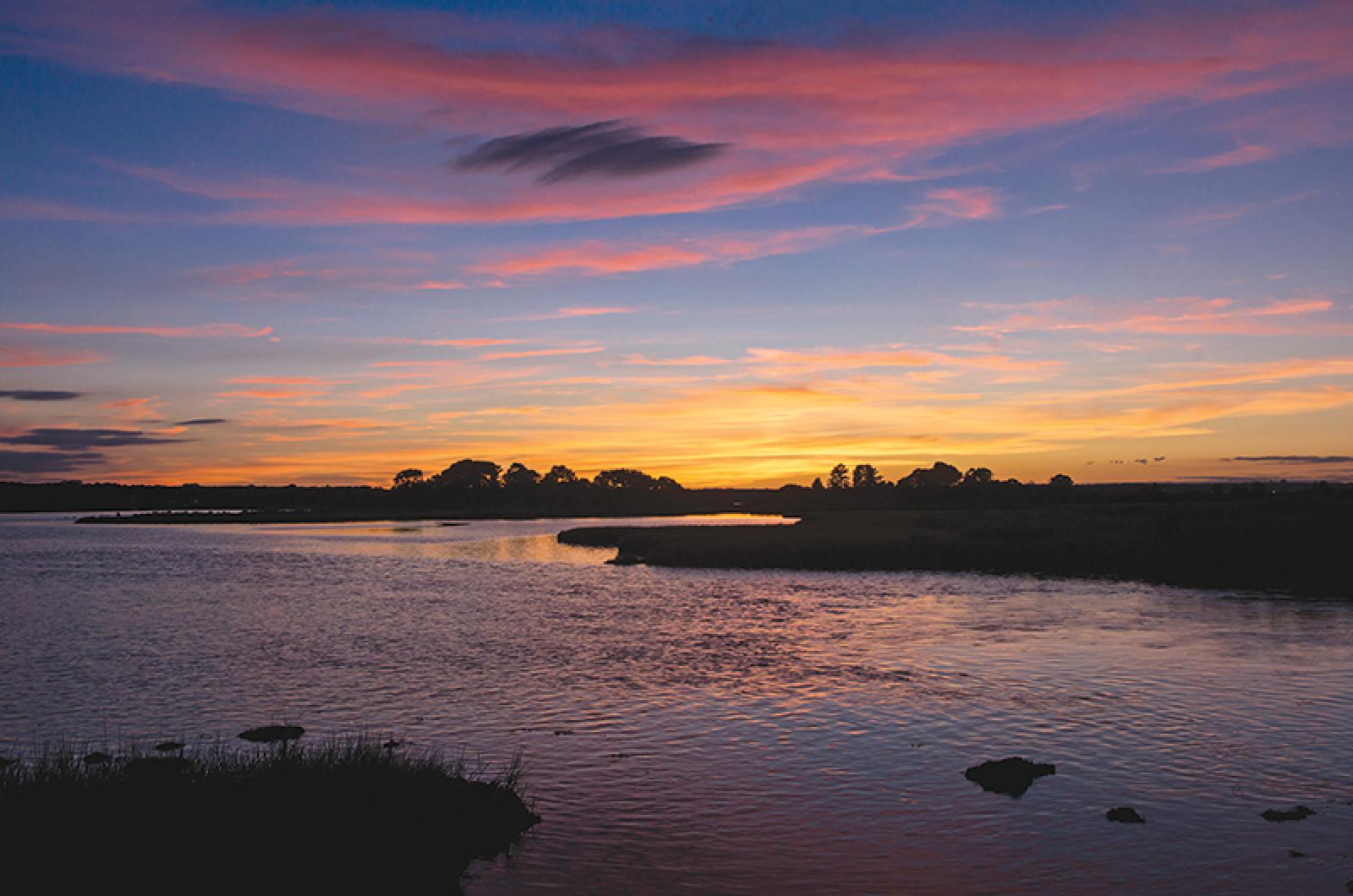



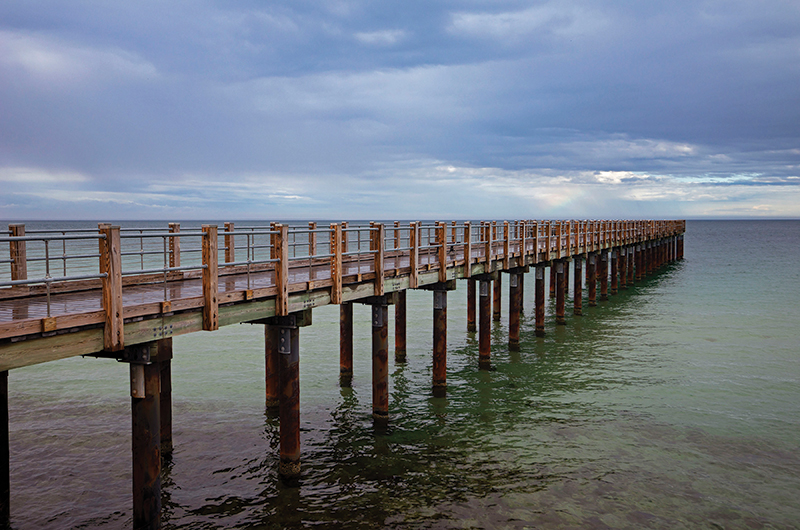
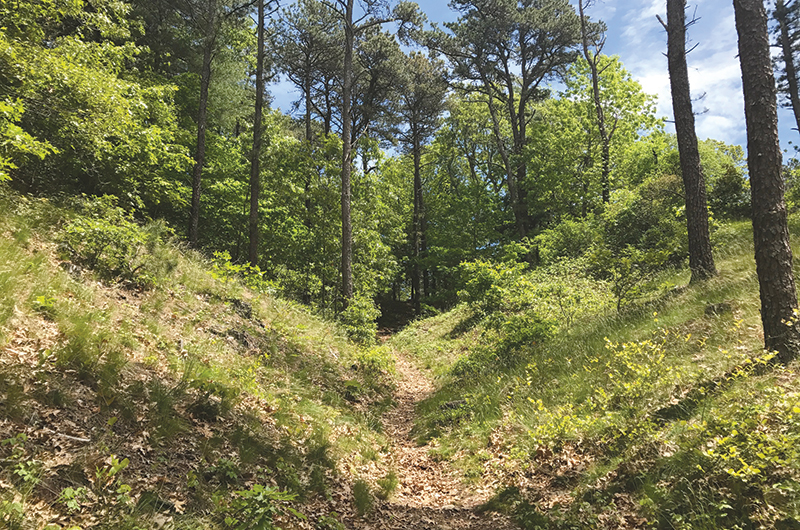
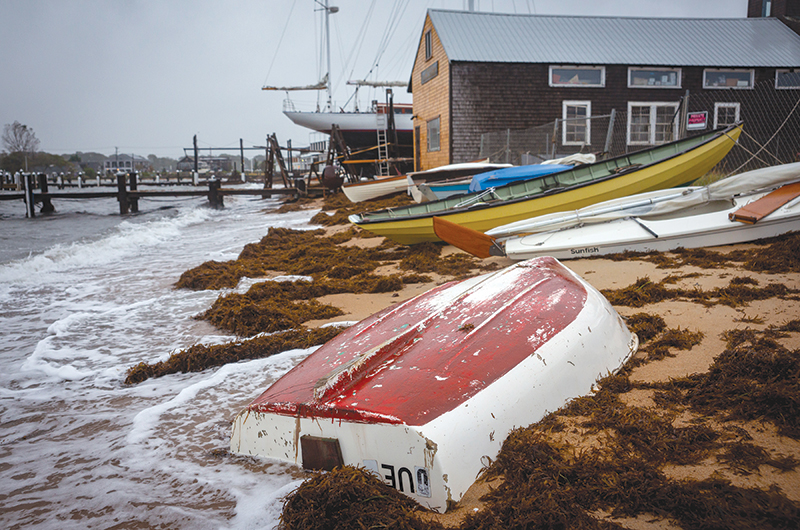
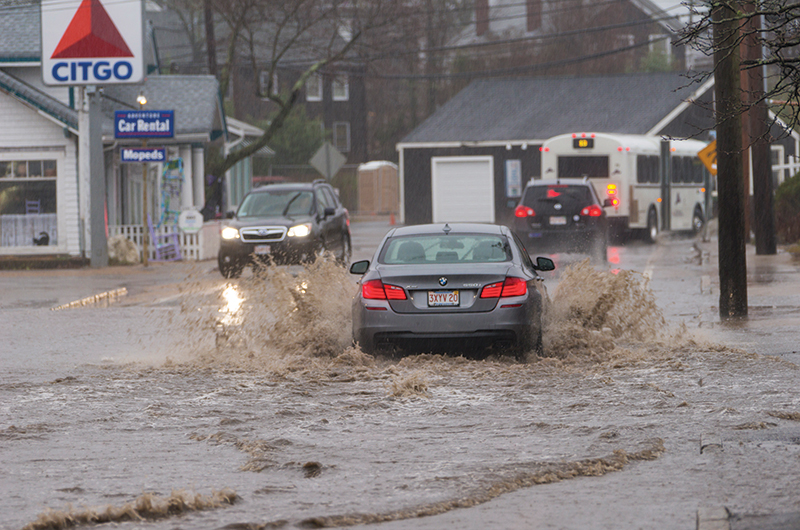






Comments